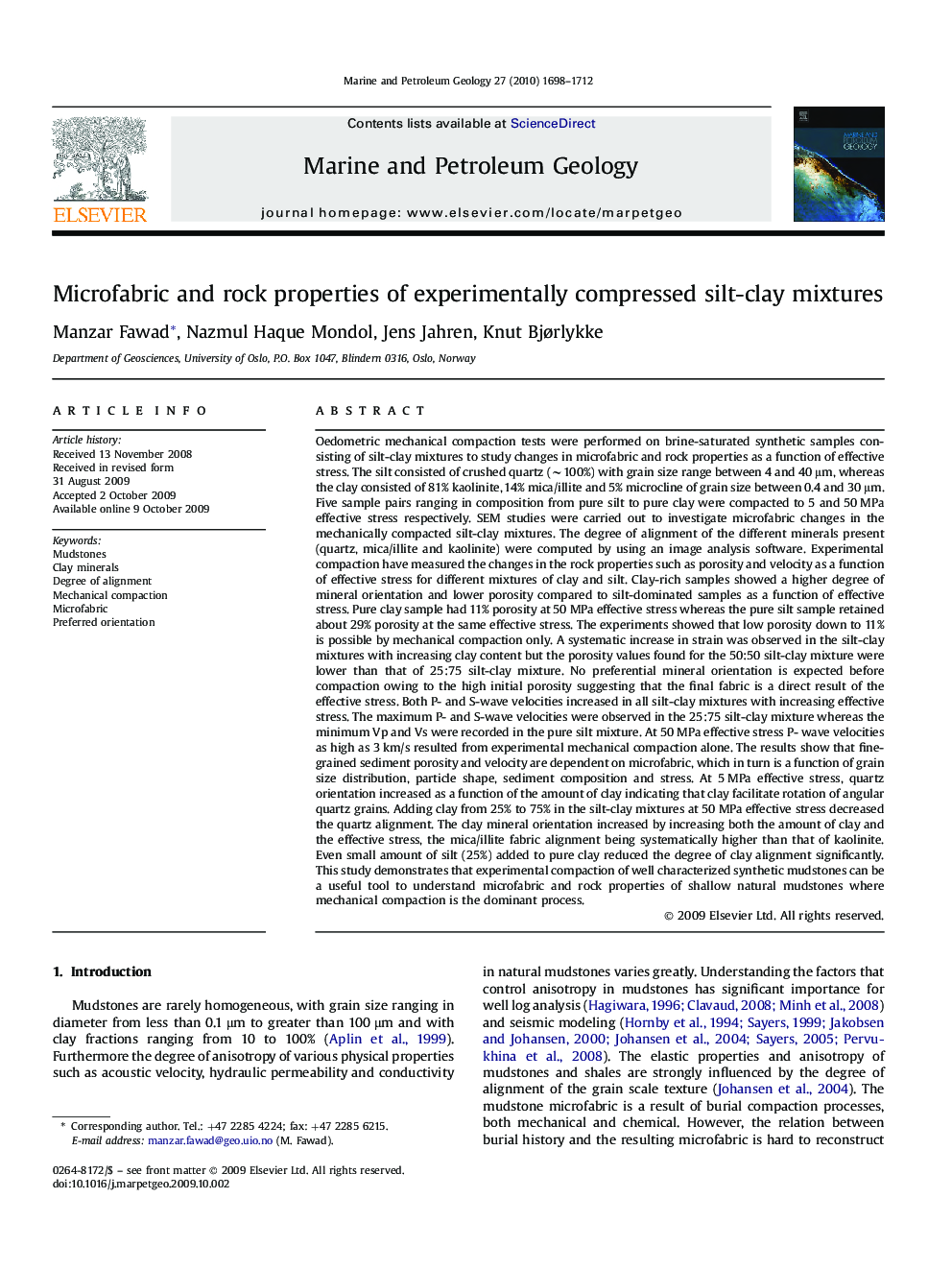| کد مقاله | کد نشریه | سال انتشار | مقاله انگلیسی | نسخه تمام متن |
|---|---|---|---|---|
| 4696153 | 1351659 | 2010 | 15 صفحه PDF | دانلود رایگان |

Oedometric mechanical compaction tests were performed on brine-saturated synthetic samples consisting of silt-clay mixtures to study changes in microfabric and rock properties as a function of effective stress. The silt consisted of crushed quartz (∼100%) with grain size range between 4 and 40 μm, whereas the clay consisted of 81% kaolinite, 14% mica/illite and 5% microcline of grain size between 0.4 and 30 μm. Five sample pairs ranging in composition from pure silt to pure clay were compacted to 5 and 50 MPa effective stress respectively. SEM studies were carried out to investigate microfabric changes in the mechanically compacted silt-clay mixtures. The degree of alignment of the different minerals present (quartz, mica/illite and kaolinite) were computed by using an image analysis software. Experimental compaction have measured the changes in the rock properties such as porosity and velocity as a function of effective stress for different mixtures of clay and silt. Clay-rich samples showed a higher degree of mineral orientation and lower porosity compared to silt-dominated samples as a function of effective stress. Pure clay sample had 11% porosity at 50 MPa effective stress whereas the pure silt sample retained about 29% porosity at the same effective stress. The experiments showed that low porosity down to 11% is possible by mechanical compaction only. A systematic increase in strain was observed in the silt-clay mixtures with increasing clay content but the porosity values found for the 50:50 silt-clay mixture were lower than that of 25:75 silt-clay mixture. No preferential mineral orientation is expected before compaction owing to the high initial porosity suggesting that the final fabric is a direct result of the effective stress. Both P- and S-wave velocities increased in all silt-clay mixtures with increasing effective stress. The maximum P- and S-wave velocities were observed in the 25:75 silt-clay mixture whereas the minimum Vp and Vs were recorded in the pure silt mixture. At 50 MPa effective stress P- wave velocities as high as 3 km/s resulted from experimental mechanical compaction alone. The results show that fine-grained sediment porosity and velocity are dependent on microfabric, which in turn is a function of grain size distribution, particle shape, sediment composition and stress. At 5 MPa effective stress, quartz orientation increased as a function of the amount of clay indicating that clay facilitate rotation of angular quartz grains. Adding clay from 25% to 75% in the silt-clay mixtures at 50 MPa effective stress decreased the quartz alignment. The clay mineral orientation increased by increasing both the amount of clay and the effective stress, the mica/illite fabric alignment being systematically higher than that of kaolinite. Even small amount of silt (25%) added to pure clay reduced the degree of clay alignment significantly. This study demonstrates that experimental compaction of well characterized synthetic mudstones can be a useful tool to understand microfabric and rock properties of shallow natural mudstones where mechanical compaction is the dominant process.
Journal: Marine and Petroleum Geology - Volume 27, Issue 8, September 2010, Pages 1698–1712